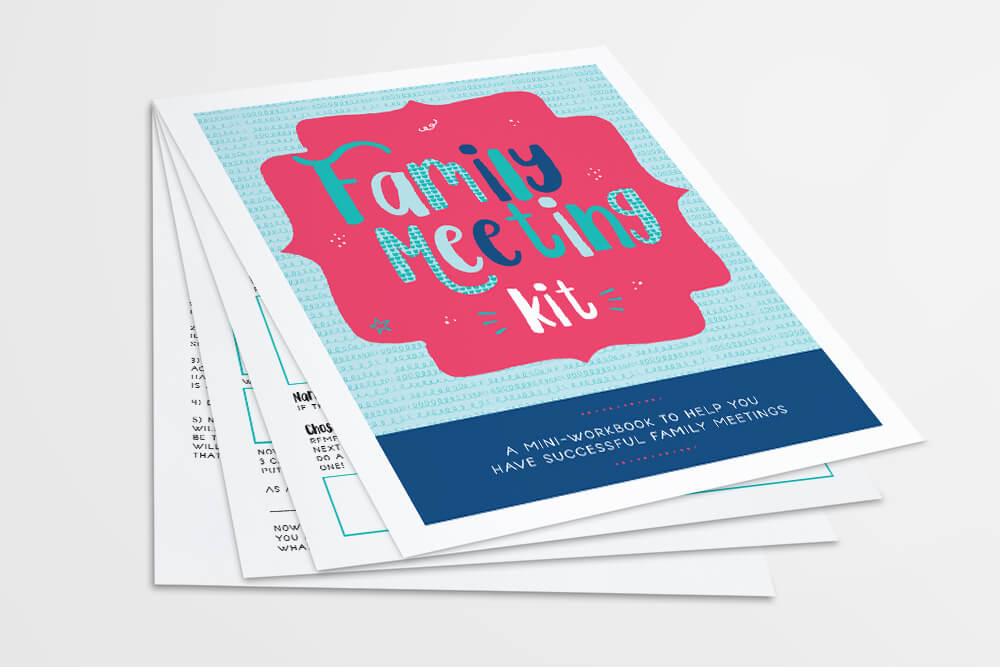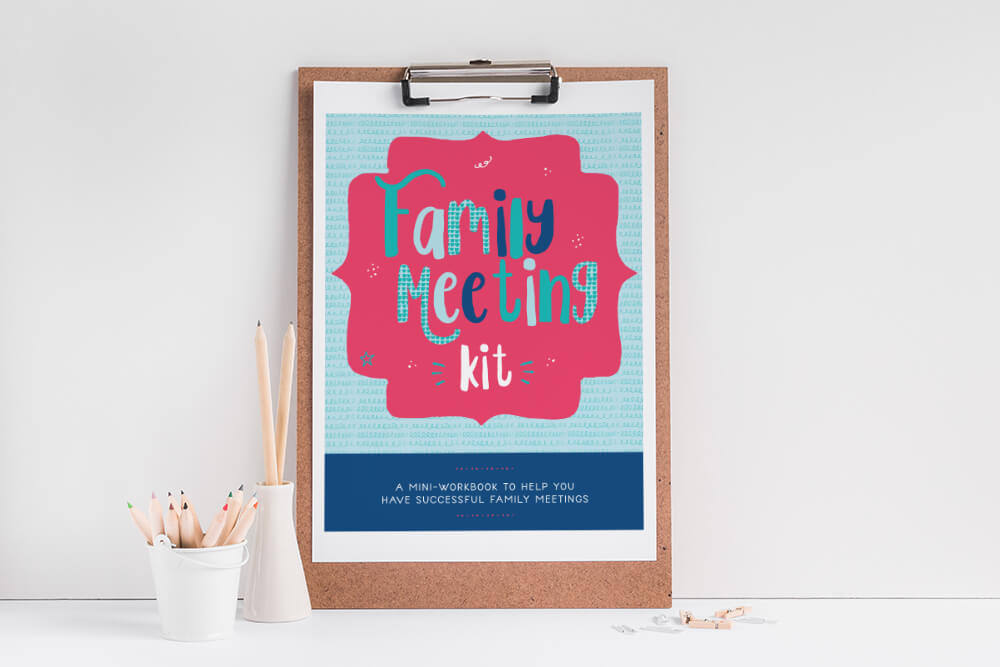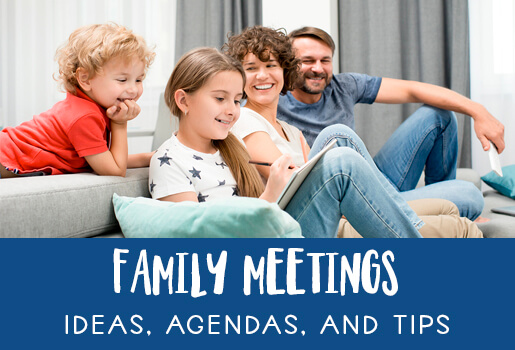Family meetings are a great parenting tool for building relationships, creating a stronger family bond and addressing issues as a team. If you are wondering how to have a family meeting, this article will give you lots of tips, ideas, and agendas to help you create a tradition that you can continue for many years.
Why Family Meetings are Important
You may be wondering why you would even want to have a family meeting. There are many benefits to starting this tradition including:
- Building a sense of togetherness
- Having rituals as a family has been shown to create stronger, more lasting bonds
- A more formalized process for addressing issues can help take out some of the negative emotions that can happen when trying to set rules or address problems
- Family meetings provide a space where everyone in the family can feel heard and understood
How to Start Having Family Meetings
If you have never had family meetings before (or if it has been a long time), let everyone in the family know that you plan on having a meeting on a specific day and time – put it on the calendar.
At your first family meeting you will want to talk about a few things:
- Why you think it is important
- Work together to define rules for making the space safe, judgement free, and loving.
- Really emphasize that you want everyone in the family to have a safe space to feel heard and understood – that family meetings are not just a place where you plan on laying down the law, passing judgement, or setting a whole bunch of rules.
If this feels overwhelming or confusing, I have a family meeting kit available in the resources section. The Family Meeting Kit includes a section that walks you through a detailed outline for setting up a family meeting.

The Agenda
Once you have established some guidelines, you may want to establish a formal agenda (especially if you have older kids.) Having boundaries and guidelines can really help to establish a safe space. When kids know what to expect, they feel safer and more comfortable.
Here is an example of an ongoing Family Meeting Agenda
- Quickly restate the rules for making this a safe space (examples would be: no talking over each other, there are no bad ideas, everyone gets a turn to speak, etc.)
- Bring up the main issue that needs to be covered or ask for input on what issues need to be discussed
- Work through the issue coming up with ideas for solving the problem and then choosing a solution together. Remember that it is important to work as a team to come up with solutions rather than just telling your kids what the solutions will or have to be. The Family Meeting Kit contains a really handy worksheet that you can use to work through issues as a family.
- Finish the meeting with a fun bonding activity. This could be a family game such as Uno, or a craft project (check out the Family Bonding Bundle that contains the Family Meeting Kit along with a couple of fun family bonding projects that are great for doing at family meetings!) You could even do a service type project together – writing cards to kids in the hospital or sorting through your dressers to find clothes to donate.
- Finally, set the date and time for your next family meeting.
Addressing Family Issues
Family meetings are great places to address common issues that your family may be struggling with such as:
- Setting Screen Time Limits (Check out this article on Setting Screen Time Limits through a Family Meeting.)
- Name Calling
- Chores and Responsibilities
- Scheduling (we all know how busy life can get when you have multiple kids with different interests, sports, hobbies, friends, etc.!)
- Sibling Rivalry Issues (Here’s an article to give you some ideas on teaching kids how to handle Sibling Rivalry.)
How to Avoid Common Problems
There are a few common problems that may arise when you start having family meetings. Being prepared to address these will help keep things on the right track!
Common Problem #1: Hurtful Behaviors or Language
If your kids are used to name calling, talking over each other, putting each other down, etc. then you may find that these behaviors spill over into your family meetings. It is important to address this and have a no tolerance policy for any of these behaviors so that the space feels safe for everyone. While name calling and put downs can seem like a common childhood behavior, they can actually be pretty hurtful and damaging in the long run.
Brené Brown has some excellent advice in her audiobook The Gifts of Imperfect Parenting. If your family struggles with name calling, shame, blame, etc. I would highly recommend listening to this! (You can listen to this on Audible click here for a trial subscription if you don’t have one already.)

Common Problem #2: Kids Aren’t Interested
If you find that your kids aren’t interested in family meetings there are a few solutions you can try. First, you may want to try doing a few where you make them more about family bonding than addressing issues. Spend the majority of your time doing an activity that everyone enjoys.
Another option would be assigning a different family member to plan and lead each family meeting. Sometimes allowing kids to take ownership of an activity or responsibility helps them to engage and become more interested.
One other option for getting your kids interested and engaged in your family meeting is to talk with them privately to see if there is a specific reason that they are not wanting to be involved. You may find that they are worried that it will not be a safe space for them or that they will feel bored, or any number of other reasons. Once you find out their reasoning, work together to find a solution. Using my free problem-solving worksheet can be a really helpful tool for addressing issues like this with your children.
Common Problem #3: Communication Issues
The other common problem that can happen in families is that you will have one member who talks to much or one family member who doesn’t talk at all. If you suspect that this may happen, make sure to bring this up at your first meeting when you are discussing rules for the family meeting. You can also try utilizing a “talking stick” that you pass around. Whoever has the stick (or stuffed animal, toy, marker, or maybe even a glitter wand like this one) is the only one who gets to talk. You may need to include one or both of the following rules about the talking stick:
- You can have the talking stick for a set time limit (1-2 minutes)
- Everyone gets at least 1 turn with the talking stick
Family Meeting Kit
If you are ready to start having family meetings, make sure to check out the family meeting kit or the Family bonding Bundle. Both will help you be more successful at starting and running family meetings.



